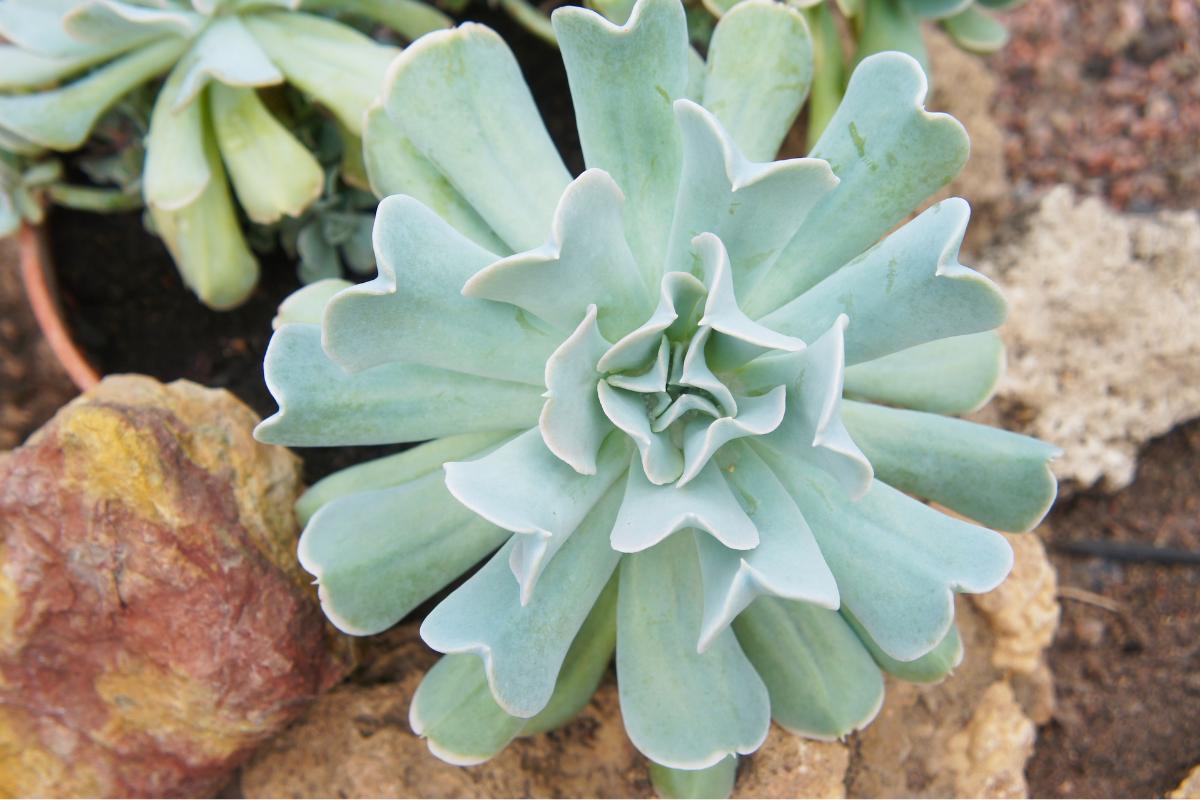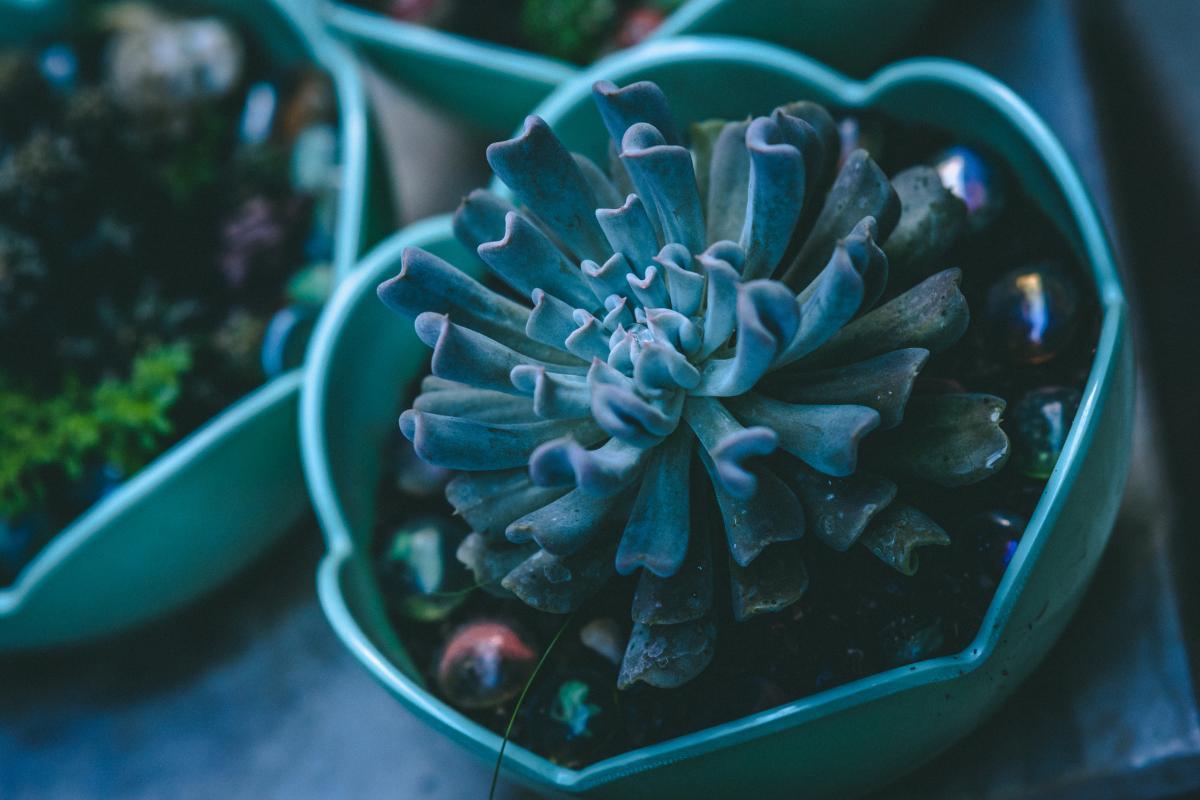Topsy Turvy Succulent Care Guide


Caring for a topsy turvy succulent plant (Echeveria runyonii) is relatively easy since it needs minimal watering and is known to survive in harsh conditions. It does require full sun exposure and soil with good drainage to prosper. The reproduction of topsy turvy plants can be done by leaf cuttings or division of individuals.
The topsy turvy succulent is a cultivar of Echeveria runyonii that is among the most popular in homes across the world. It is of Mexican origin and has a rosette-shaped arrangement that is highly sought after in garden design. They are particularly appreciated as decorative plants due to their pastel tones. In this thedailyECO article, we provide a topsy turvy succulent care guide to know how to ensure this plant thrives in your home or garden.
Characteristics of topsy turvy succulents
A type of echeveria succulent, the topsy turvy plant is a cultivar of Echeveria runyonii (aka Echeveria runyonii 'Topsy Turvy'). This means it has certain characteristics relating to these hardy plants, as well as the following:
- This species of Echeveria is characterized by having leaves in a rosette which are spatulate and cradled. For this reason, it is sometimes known as a silver spoon echeveria since the leaves and color resemble this piece of cutlery.
- The rosette measures 4.7" (12 cm) in diameter, with a height of 4-20" (10-50 cm), a size it reaches at around 2 to 5 years of age.
- The leaves are light grayish green which can look blue or silver in certain lights.
- It blooms in summer, producing an arched floral stem from which each orange flower hangs.
- Due to the great attractiveness of the plant, new cultivars of Echeveria runyonii have been created. The most marketed is this Echeveria Runyonii 'Topsy Turvy' which is even more popular than the unmodified species. This variety was created in California, United States.
- The species is native to Mexico, but for a long time it was difficult to trace its particular origin. Until recently, in the 1990s, it was found wild in the state of Nuevo León, Mexico.
To have a healthy plant at home, you can purchase a pre-rooted specimen of a topsy turvy succulent using the link below:

Topsy turvy succulent light and location
This echeveria requires full sun exposure, but can also be kept in semi-shade. If you want to have it indoors or outdoors, it needs to receive at least four hours of sun so that it does not compromise its photosynthetic processes. It is often used in gardens as a form of ground cover.
Learn more about types of partial-shade plants with our related care guide.

Soil for topsy turvy succulent plants
Being a succulent, the topsy turvy plant needs porous soil that drains water well. Without proper drainage, it can rot. The container is important too. It should be a planter with holes to release excess water. To prepare the substrate you can make a mixture at home.
You can create topsy turvy soil by mixing equal parts worm castings, peat and a porous material that is easier to obtain. This can be vermiculite, tepojal or lava rock for plants. You can also get the substrate already prepared in specialized stores, just ensure it is formulated for succulents or cacti.
Learn the difference between cacti and succulents in our related article.
Watering topsy turvy succulents
Echeveria are plants with low water demand. The frequency will be determined by your environment, but the measure that will indicate that it needs water is the substrate. You should let it dry between watering. Do so once the first centimeter of soil is no longer wet. On average, it is usually watered once a week if it is kept outdoors and once every two weeks indoors.
Watering is not done by wetting the rosette leaves because it can cause crown rot. The best method is the immersion irrigation method. This involves submerging the base of the pot into a container of water so that the substrate and roots absorb water through the holes in the bottom of the container. If the planter is too large, you can water from above, but only by wetting the substrate without wetting the leaves.
In winter the plant goes into a state of dormancy because its growth is not active. Watering should be reduced to the minimum, doing it once every two or three weeks. Only water if you notice the leaves starting to lose shape or wrinkle.

Topsy turvy succulent diseases and pests
The disease to which this plant is prone is crown rot, which occurs when there is excess humidity. This is either due to overwatering or a poorly prepared substrate. Extra water attracts fungi, which rot the plant from the base.
As for pests, these are the ones you can contract:
- Cottony mealybugs: they are small insects that live on the leaves and look like cotton balls. They suck the sap and take away its energy, in addition to leaving yellow stains. Leaves where they have settled should be removed to prevent proliferation.
- Aphids: they also feed on plant sap, but these look like small green insects. To control them, it is recommended to crush them with your finger, as they are easy to eliminate. Learn about caring for perennial larkspur, another plant which is susceptible to aphid infestation.
- Weevils: they are small, black beetles. The larvae feed on the roots and the adults on the leaves. They usually come out only at night.
Topsy turvy succulent propagation
Topsy turvy plants best reproduce asexually by cuttings. With this method, a leaf is removed and placed on worm castings. In doing so, we keep the substrate bed moist. It will soon develop roots and a new miniature rosette at the end of the cutting, which will gradually grow into a larger plant. You can transfer it to a new topsy turvy planter when the roots are well formed and large enough to handle safely. Do this during the growing season, i.e. spring or early summer.
Topsy turvy succulents form colonies, so the other alternative is to separate the individuals by the roots to propagate by division. In this case, it must be done very carefully so as not to detach the leaves that are easy to throw away.
Learn how to care for and propagate other plants in the home with our guides to portulaca care and propagation, and syngonium care and propagation.
If you want to read similar articles to Topsy Turvy Succulent Care Guide, we recommend you visit our Plant care and cultivation category.
- Royal Horticultural Society. (n.d.). Echeveria runyonii, silver spoons. Retrieved from: https://www.rhs.org.uk/plants/6243/echeveria-runyonii/details
- Illustrated Handbook of Succulent Plants: Crassulaceae. (2012). Germany: Springer Berlin Heidelberg.








